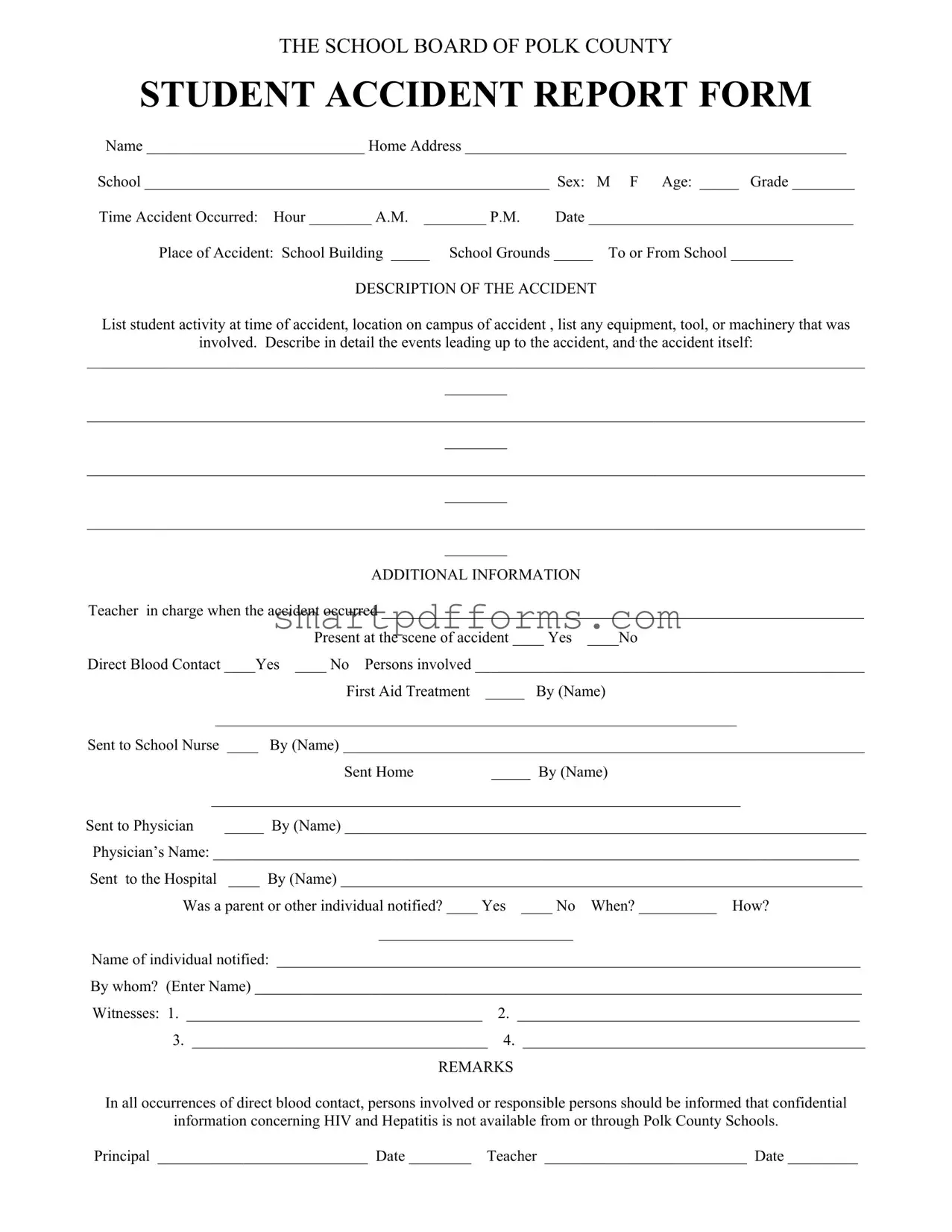THE SCHOOL BOARD OF POLK COUNTY
STUDENT ACCIDENT REPORT FORM
Name ____________________________ Home Address _________________________________________________
|
|
|
School ____________________________________________________ Sex: |
M F Age: _____ Grade ________ |
Time Accident Occurred: Hour ________ A.M. ________ P.M. |
Date __________________________________ |
Place of Accident: School Building _____ School Grounds _____ |
To or From School ________ |
DESCRIPTION OF THE ACCIDENT
List student activity at time of accident, location on campus of accident , list any equipment, tool, or machinery that was
involved. Describe in detail the events leading up to the accident, and the accident itself:
____________________________________________________________________________________________________
________
____________________________________________________________________________________________________
________
____________________________________________________________________________________________________
________
____________________________________________________________________________________________________
________
ADDITIONAL INFORMATION
Teacher in charge when the accident occurred ______________________________________________________________
Present at the scene of accident ____ Yes ____No
Direct Blood Contact ____Yes ____ No Persons involved __________________________________________________
First Aid Treatment _____ By (Name)
___________________________________________________________________
Sent to School Nurse ____ By (Name) ___________________________________________________________________
|
Sent Home |
_____ By (Name) |
|
____________________________________________________________________ |
Sent to Physician |
_____ By (Name) ___________________________________________________________________ |
Physician’s Name: ___________________________________________________________________________________
Sent to the Hospital ____ By (Name) ___________________________________________________________________
Was a parent or other individual notified? ____ Yes ____ No When? __________ How?
_________________________
Name of individual notified: ___________________________________________________________________________
By whom? (Enter Name) ______________________________________________________________________________
Witnesses: 1. ______________________________________ 2. ____________________________________________
3.______________________________________ 4. ____________________________________________
REMARKS
In all occurrences of direct blood contact, persons involved or responsible persons should be informed that confidential
information concerning HIV and Hepatitis is not available from or through Polk County Schools.
Principal ___________________________ Date ________ Teacher __________________________ Date _________
